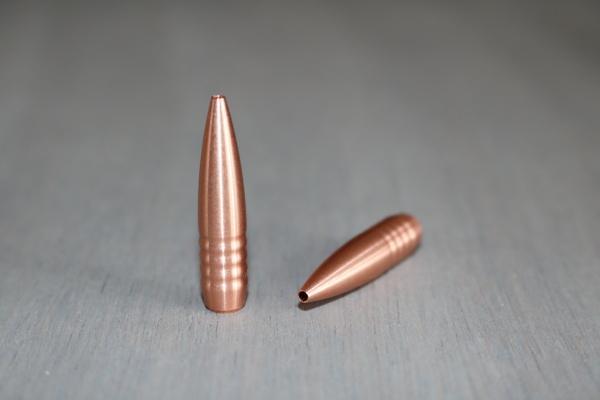Well mind you im not arguing your point.
But your basicly comparing apples with your example.
Im not talking about wind.
Im talking about velocity.
If you think a 300 gr @ say 3250 is no different than one @ 2850 at say about a mile, its only because youve never watched them. Ditto with all the others.
(You), and everybody else, will shoot the faster one better, especially in the wind.
Yes, everything equal, the faster the better - no doubt. But I will take accuracy any time over velocity. Take your example above. A 300 Berger @2850 drifts .94 MOA for every mile of wind at 1760 yards (over twice the drift it has at 1000). The same bullet at 3250 drifts .75 MOA for every mile of wind (JBM, no spin drift). If we are trying to hit a 1MOA plate (17.6 inches) and each rifle shoots 1/2 MOA groups (meaning a max horizontal dispersion of 1/4 MOA from center), you have these allowable wind errors to guarantee a 100% probability of a hit:
2850: (.5-.5/2)/.94= .26mph
3250: (.5-.5/2)/.75= .33 mph
Speed doesn't matter that much; if you don't guess the wind perfectly, you risk missing at some point, because eventually there will be one bullet that hits 1/4 MOA away from center in the direction the wind is blowing (and the wind error blows you another 1/4 MOA). Of course, there is an equal chance that bullet hit in the direction opposite the wind, in which case you get a dead center hit and call yourself a wind savant, post the pic on LHR, etc.
If that 2850 fps bullet groups 1/4 MOA, your allowable wind error is:
(.5-.25/2)/.94 = .4, meaning you can misjudge the wind by .4 mph and hit the target every time, slightly better than the faster bullet. Of course, with bigger differences in accuracy (.75 vs .25) the allowable wind error is even larger for the more accurate rifle, even if the bullet is slower.
Something to think about the next time you want to whack an elk at a mile, especially considering the wind is going to change more than your allowable error during the TOF.
What about 1000 yards, same as above but trying to hit a 10" target?
2850 (1/2 MOA accuracy):
wind drift is .44 MOA per mile of wind; allowable wind estimation error:
(.5-.5/2)/.44=.57 mph allowable error
3250 (1/2 MOA accuracy):
wind drift is .35 MOA per mile of wind; allowable wind estimation error:
(.5-.5/2)/.35=.71 mph allowable error
3250 (3/4 MOA accuracy):
wind drift is .35 MOA per mile of wind; allowable wind estimation error:
(.5-.75/2)/.35=.36 mph allowable error
The math above shows:
1. A 400 fps MV difference only increases your allowable error wind estimation error by .14 mph (granted, percentage wise it is 24.5%,)
2. A rifle that shoots 1/4 MOA but 400 fps slower has more allowable wind estimation error.
Maybe too much math and too theoretical, but my experience at LR bears out: accuracy beats velocity when it comes to wind.



